Sustainability Marker to Support the Project Selection Process: the UNOPS Case
Publications
PMI Global Congress 2014 – North America
Phoenix – Arizona - USA – 2014
2015 AACE International Annual Congress
Las Vegas – Nevada - USA – 2015
Abstract
The objective of this paper is to present a non-conventional approach that is being currently implemented at the United Nations Office for Project Services, when selecting new projects globally, in order to include, as project selection criteria, social, environmental and economic sustainability aspects in humanitarian and development projects.
Using a set of twenty-five themes in four major groups, an internal tool called Sustainability Marker was developed to analyse projects above and beyond the traditional financial criteria in order to evaluate the real impact of the project on the sustainable development goals.
Traditional Project Evaluation Criteria
When looking into how organizations decide over which projects to execute, we can notice a constant desire to have clear, objective and mathematical criteria (HAAS & MEIXNER, 2005). However, decision making is, in its totality, a cognitive and mental process derived from the most possible adequate selection based on tangible and intangible criteria (SAATY, 2009), which are arbitrarily chosen by those who make the decisions.
Basically, the prioritization of projects in a portfolio is nothing more than a sequencing scheme based on a benefit-cost relationship for each project. Projects with higher benefits, when compared to their costs, will have a higher priority. It’s important to observe that a benefit-cost relationship does not necessarily mean the use of exclusive financial criteria like the widely known benefit-cost ratio, but instead a broader concept of the reaped benefits from executing the project and their related efforts (VARGAS, 2010).
In most enterprises, the main criteria groups are related to financial, strategic, risks, urgency and stakeholder commitment aspects (VARGAS, 2010). The main challenge is to put in place criteria that can capture outcomes instead of just basic outputs. Many real cases support the lack of understanding of the real expected outcomes, where projects were delivered to time, cost and quality objectives and yet are not yielding positive results (DUGAL, 2010). Project managers have constructed bridges without access roads, have built hospitals and courthouses which are empty later on, have implemented ERP systems and other business changes that have destroyed organizations1.
PMI’s Standard for Portfolio Management (PMI, 2012) mentions that the scope of a project portfolio must stem from the strategic objectives of the organization. These objectives must be aligned with the business scenario which in turn may be different for each organization. Consequently, there is no perfect model that covers the right criteria to be used for any type of organization when prioritizing and selecting its projects. The criteria to be used by the organization should be based on the values and preferences of its decision-makers.
UNOPS Sustainability Criteria
With a strong focus on the developing world, United Nations Office for Project Services (UNOPS) states that a project can only be considered sustainable if it addresses the impacts on a broader set of stakeholders, including generations not yet born (BOBROW, 2014). This comprises sustainability aspects that should be embedded into the project while executing it (How) and the sustainability aspects after its conclusion (Aim).
Aim | How |
Exhibit 1 – UNOPS definition of a sustainable project | |
Projects and programmes comply with strict criteria concerning the environmental and social scope and planned results before they are initiated. | UNOPS teams embed cross-cutting initiatives, such as how to get the best community support, into their project planning and implementation phases. |
Insert sustainable principles into every single project is a major task and sometimes the decision on what actions should be in place create a dilemma for the project manager and the project team. In the locations where UNOPS operates, funding is often too limited to address all of the basic needs. Let’s take the example of building a school. There can be enough funding to put solar panels on the roof or to build more classroom space but not both. If we put the panels on then the school can have electricity and provide space for computers and potentially evening classes. However, if instead the classroom is made larger, more children can attend. How should a project manager make such a decision? (BOBROW, 2014).
 Exhibit 2 – Example of transforming Inputs into outputs, outcomes and impact in the development sector (UNOPS, 2014)
Exhibit 2 – Example of transforming Inputs into outputs, outcomes and impact in the development sector (UNOPS, 2014)
In order to support an informed decision-making process, four categories of sustainability were identified based on the Aspire Model with some adaptation to the development context:
- Social – It covers aspects such as gender, population, vulnerability and other aspects related to the community where the project is being implemented.
- Environmental – It covers aspects such as air, land, water and biodiversity where the project is being implemented.
- Economic – It covers aspects such as the economic relevance for the community, job generation, equity and livelihood.
- National Capacity – It covers aspects such as the use of local capacity to deploy the project including skills and knowledge, corruption, political and social stability.
25 themes of the sustainability marker
After discussions with partners, project managers and experts in the field, the 20 themes within the ASPIRE model were adapted and augmented into the 25 themes now represented in the UNOPS Sustainability Marker. (Exhibits 3, 4, 5 and 6).

Exhibit 3 – Social themes
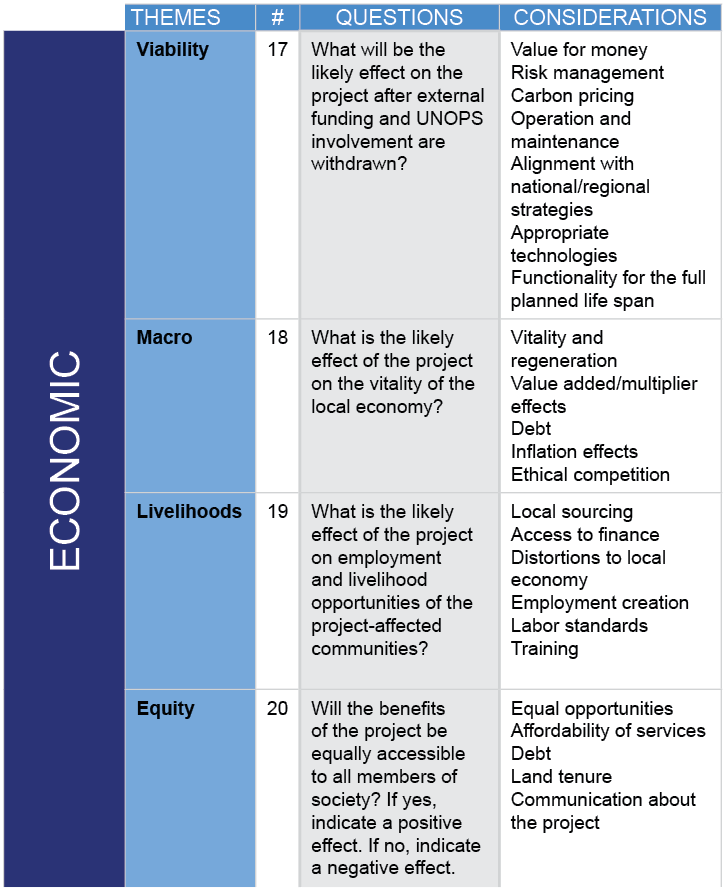 Exhibit 4 – Economic themes
Exhibit 4 – Economic themes
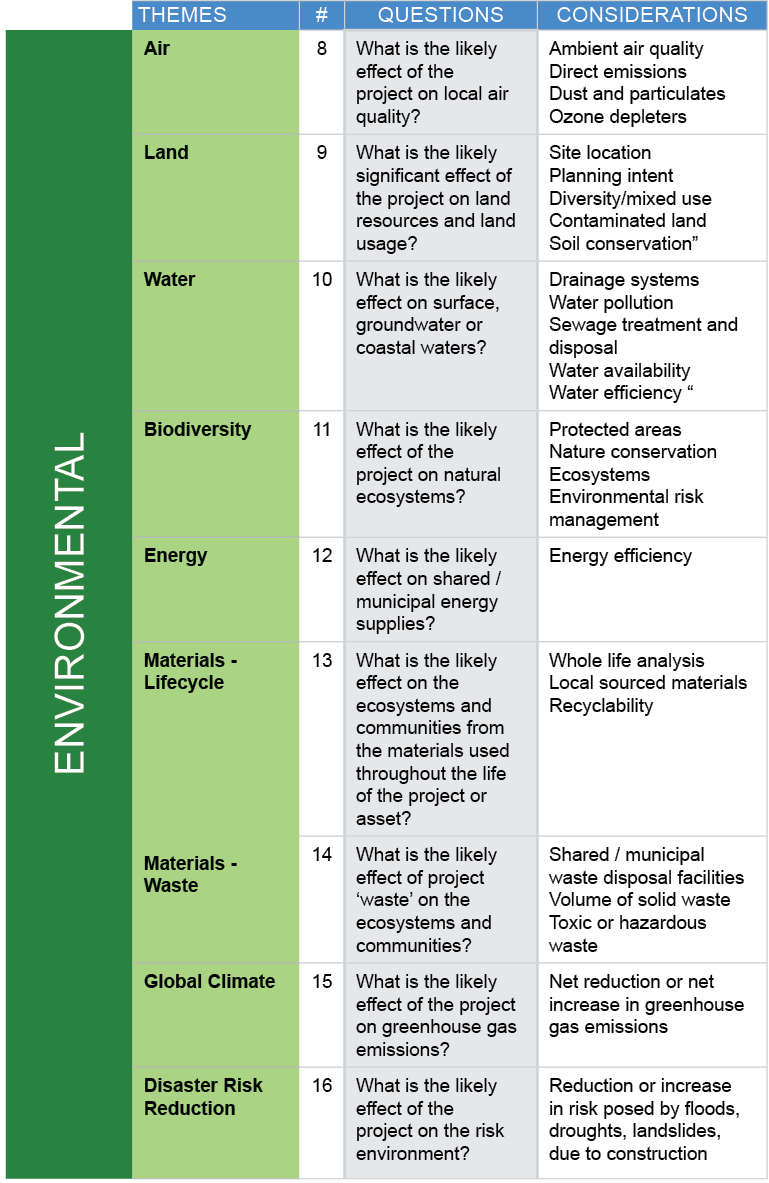
Exhibit 5 – Environmental themes
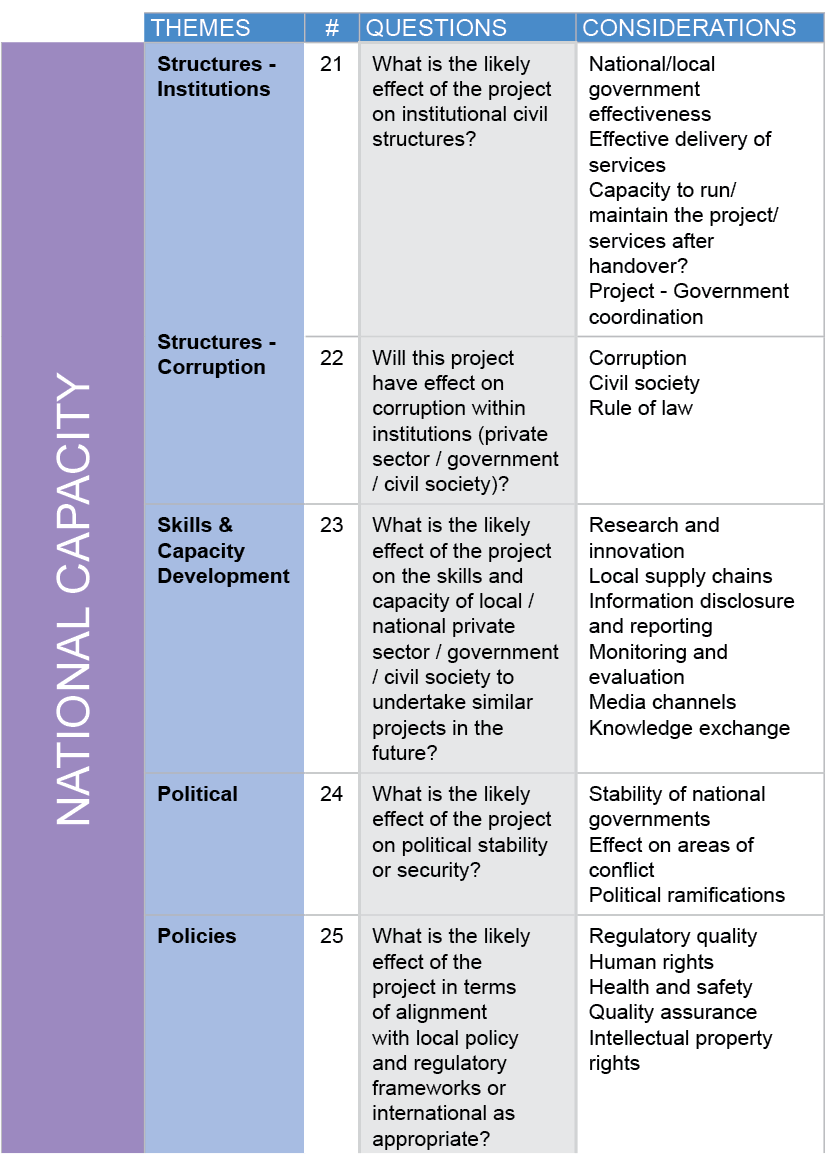 Exhibit 6 – National Capacity themes
Exhibit 6 – National Capacity themes
Evaluating the Sustainability Themes
UNOPS project life cycle follows a five-stage process (UNOPS, 2014) as presented in Exhibit 7.
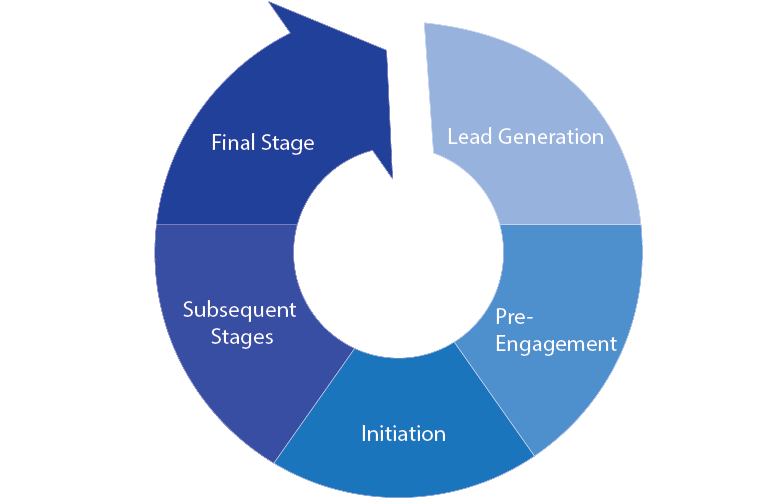
Exhibit 7 – UNOPS Engagement Process (UNOPS, 2014)
The Engagement process steps follow a progressive development where more effort is put in place during the initial phases, in order to collaborate with the project’s key stakeholders to adjust the plans and outputs to address the relevant sustainability aspects. This approach follows the concept that the capability to add value decreases and the cost of correction increases exponentially over time for a given project (VARGAS, 2014).
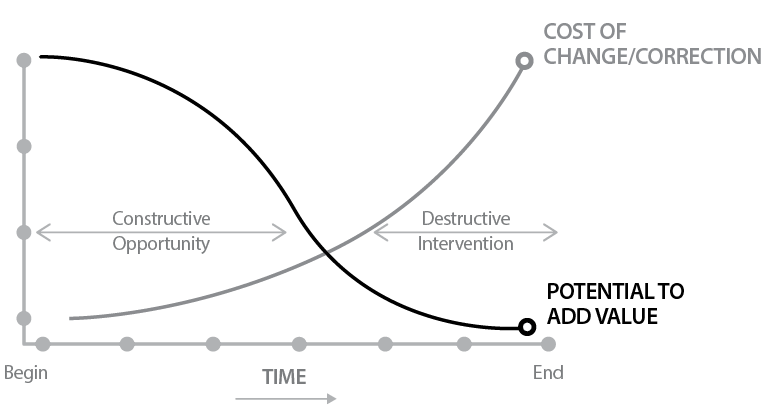
Exhibit 8 – Potential to add value again the cost of correction for a specific project (VARGAS, 2014)
On the Lead Generation phase, a bigger effort is put into place to work with the key stakeholders on the relevance of each sustainability aspect.
During this stage, training, discussion forums and informal assessments are put in place to create a positive environment for the Pre-Engagement phase assessment.
On the Pre-Engagement phase, the team needs to assess the twenty-five themes for the project delivery (effects during project delivery) and for the post-project (effects after the outcome has been delivered). The effect-based scale is presented in Exhibit 9.
 Exhibit 9 – Effect based scale on the Pre-Engagement Phase (during and after project delivery)
Exhibit 9 – Effect based scale on the Pre-Engagement Phase (during and after project delivery)
After consolidating the information, the marker chart is presented for both Post-project and During Delivery scenarios (Exhibit 10).
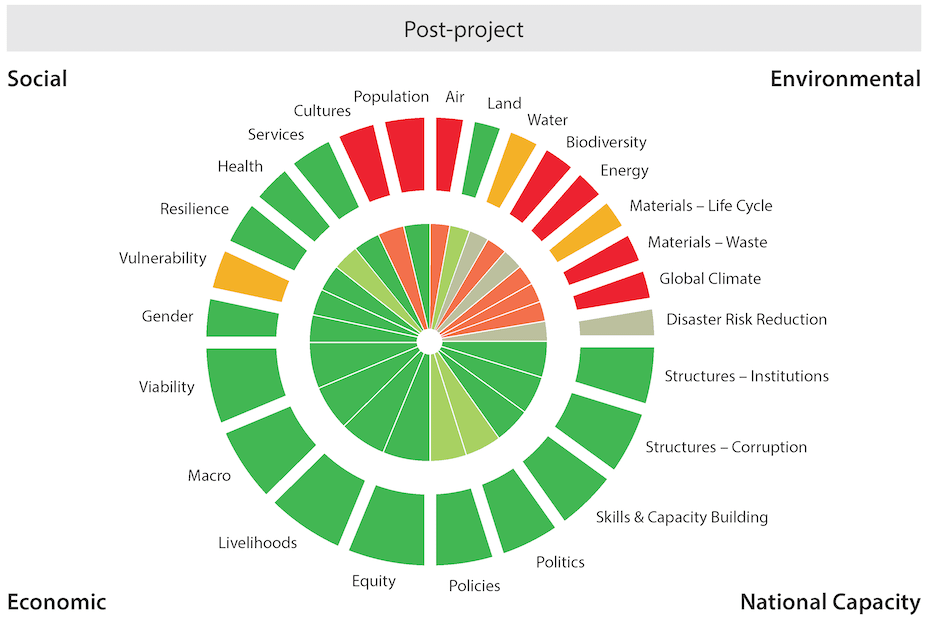
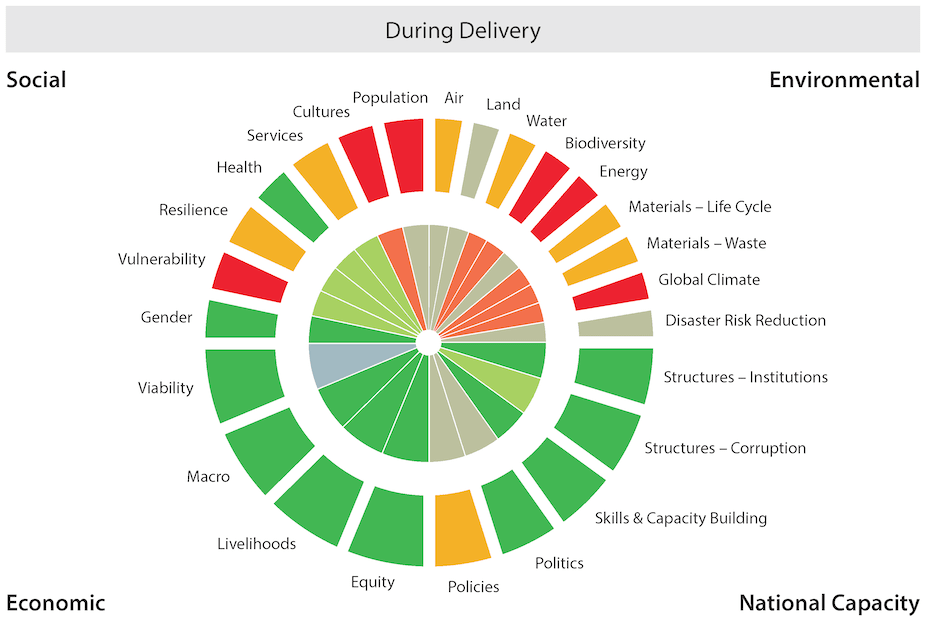
Exhibit 10 – Example of Sustainability Marker Wheel Graph during the Pre-Engagement phase
After the Pre-engagement phase, the project team will work with the stakeholders to address any relevant sustainability aspects through direct actions in the project delivery or changes to the scope statement and scope definition (PMI, 2013a) to include specific activities, potential budget lines or a direct benefit of the project, if applicable (Exhibit 11).
 Exhibit 11 – Action plan scale on the Initiation Phase
Exhibit 11 – Action plan scale on the Initiation Phase
The final result depicts an expected improvement to the sustainability aspects to be delivered by the project by the implemented actions like it is presented in Exhibit 12.
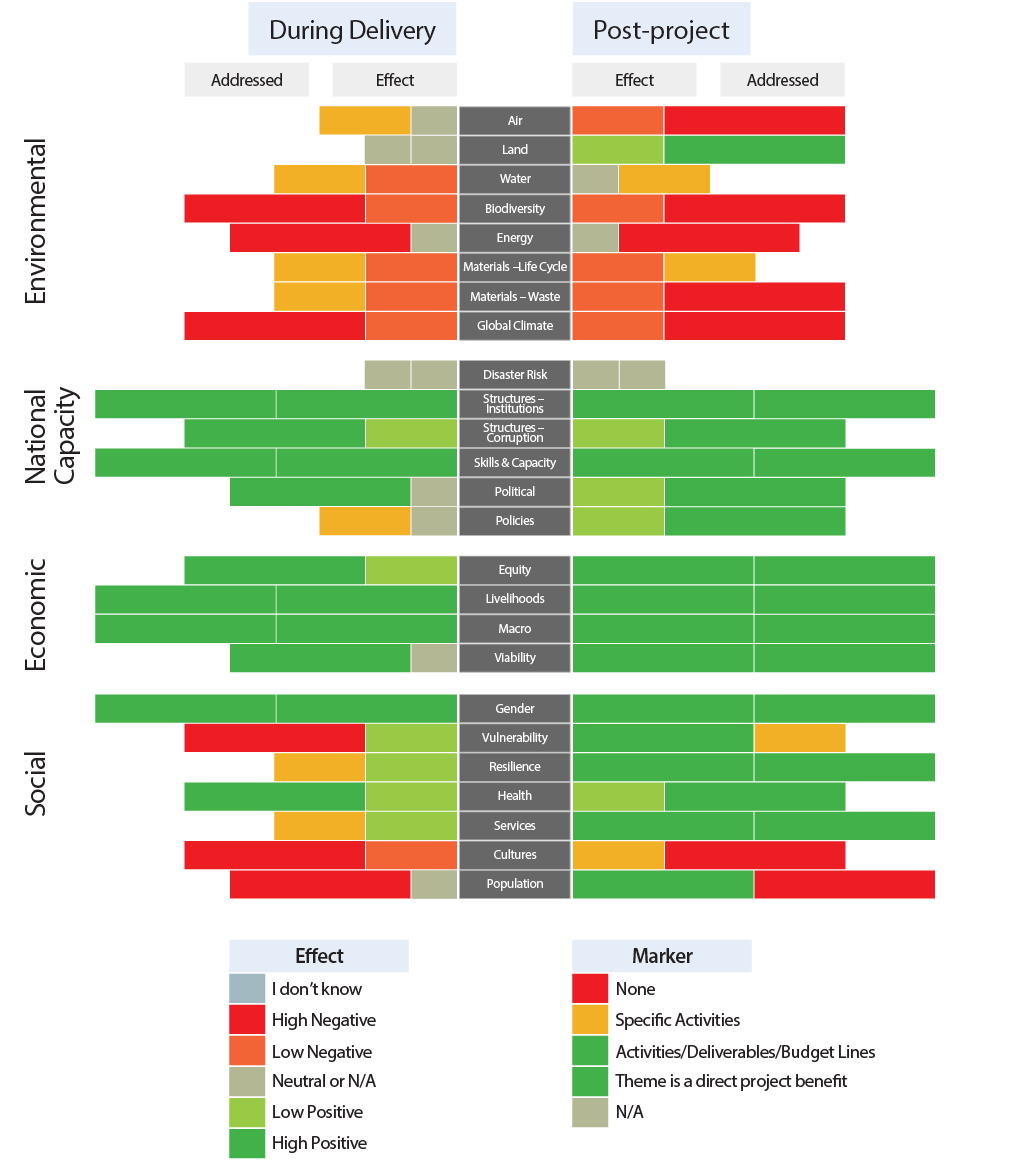 Exhibit 12 – Example of Sustainability Marker Bar Graph during the Initiation Phase (Including Action Plans)
Exhibit 12 – Example of Sustainability Marker Bar Graph during the Initiation Phase (Including Action Plans)
Conclusions
This paper aimed to present and discuss the selection criteria implemented by UNOPS to address social, environmental and economic sustainability in humanitarian and development projects by using twenty-five themes grouped in four dimensions for the project execution and post-project results.
The UNOPS Sustainability Marker is currently on the pilot in most of the 1,300 UNOPS projects globally. Challenges related to different cultural aspects, resistance to change and short term need x long term perspective have been addressed and incorporated on each new release of the tool.
References
ASPIRE Version 1.3 (2013). Arup International Development.
BOBROW, H. (2014). Taking Responsibility for Project Success: Sustainability and the Project Process. Dubai: PMI Global Congress EMEA.
DUGGAL, J.S. (2010). Next Level Up: How Do You Measure Project Success? Rethinking the Triple Constraint. Retrieved on 1st August 2014 from https://www.pmi.org/Knowledge-Center/Next-Level-Up-How-Do-You-Measure-Project-Success.aspx
HAAS, R. & MEIXNER, O. (2005). An Illustrated Guide To Analytic Hierarchy Process. Vienna: University of Natural Resources and Applied Life Sciences.
PMI (2013a). The Project Management Body of Knowledge: Fifth Edition. Newtown Square: Project Management Institute.
PMI (2013b). The Standard for Portfolio Management: Third Edition. Newtown Square: Project Management Institute.
SAATY, T. L. (2009). Extending the Measurement of Tangibles to Intangibles. International Journal of Information Technology & Decision Making, Vol. 8, No. 1, pp. 7-27, 2009. Available at SSRN: https://ssrn.com/abstract=1483438.
UNOPS (2014). Body of Knowledge Sustainable Project Management Practice: Twelfth Edition. Copenhagen: UNOPS.
VARGAS, R. V. (2010). Using the Analytic Hierarchy Process (AHP) to Select and Prioritize Projects in a Portfolio. Washington/DC: PMI Global Congress North America.
VARGAS, R. V. (2014). Gerenciamento de Projetos – Estabelecendo Diferenciais Competitivos: Oitava Edição. Rio de Janeiro: Brasport (Brazilian Portuguese).
1. See Catalog of Catastrophe at https://calleam.com/WTPF/?page_id=3
Portfolio Management